|
|
|
|
|
|
|
Achi-Kochi Japan
Showing many places to visit and foods to eat in Japan
|
|
|
|
|
|
|
|
|
|
|
|
|
Japan
> Tokai region
> Nagoya City
|
|
|
|
|
|
|
Nagoya City
Aichi Pref., Tokai ( Achi-Kochi Japan )
|
|
|
|
|
|
|
|
|
|
|
|
|
( "Achi-Kochi" in Japanese means "Here and there" in English. )
Nagoya City, Aichi Pref., Tokai region
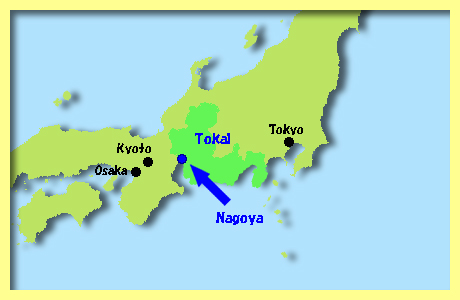
Nagoya ( above ), located in the west of Tokai Region, is the capital city of Aichi Prefecture and the fourth largest city in Japan. Its population is more than 2.3 million.
Three of the most popular Sengoku Daimyo ( warring lords ), Nobunaga Oda, Hideyoshi Toyotomi and Ieyasu Tokugawa were closely related to the city during Sengoku Jidai, the Age of Warring States ( the late 15th century - the end of the 16th century ==> A History of Japan vol.2 Samurai Age ), so there are many historic sites and artworks in Nagoya and its surrounding areas.
Also Nagoya Meshi ( Nagoya cuisine or foods ) is very unique local specialty dishes. There in the city are many restaurants which serve various kinds of Nagoya Meshi, which are so popular among tourists.
|
|
Nagoya-jo Castle

After Ieyasu Tokugawa established Tokugawa Shogunate in Edo ( Tokyo now ) in A.D.1603, he started the construction of Nagoya-jo Castle in A.D.1610. The main keep ( above ) was completed in A.D.1612. The main keep and 23 structures were designated as National Treasures of Japan.
However in A.D.1945, many structures including the main keep were burnt down in air raids during WWII. In A.D.1959, the main keep and a smaller keep joined were rebuilt with reinforced concrete. It is said that the castle keeps Nagoya what it is. Nagoya did need the castle. Nagoya-jo Castle is not original, but one of popular castles in Japan.
|
|
Moats, Stone Walls and Turrets
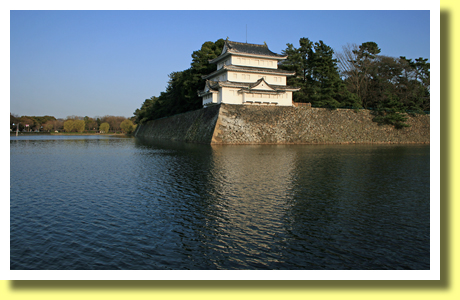
Nagoya-jo Castle was defended with moats, stone walls and turrets. The above photo shows Northwest Turret, which is said to have been a keep of Kiyosu-jo Castle and moved in A.D.1611. Some turrets including Northwest Turret survived the air raids during WWII.
|
|
Honmaru Goten ( Palace )
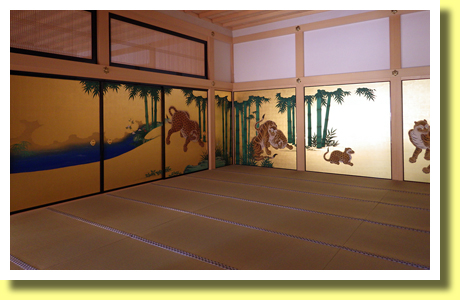
Near the main keep, there was Honmaru Goten ( Palace ), inside of which is shown in the above photo. Ieyasu Tokugawa made the leading artists decorate the palace, which became the most gorgeous castle palace in Japan.
Though the palace was destroyed in air raids, most of the sliding doors and paintings had been stored elsewhere during WWII. It helped the reconstruction of Honmaru Goten Palace, which was completed in A.D.2018.
|
|
Atsuta Jingu ( Shrine )

It is said that Atsuta Jingu ( Shrine ) was founded in A.D.646 to house Kusanagi-no Tsurugi, a legendary sword, which is one of Three Imperial Regalia. So many people have paid and pay homage at the shrine. Also three famous warring lords restored the buildings of the shrine - Nobunaga Oda in A.D.1571, Hideyoshi Toyotomi in A.D.1591 and Ieyasu Tokugawa in A.D.1600.
|
|
Mud Wall

As of A.D.1560, Owari Province ( now the western half of Aichi Prefecture ) was the domain of Nobunaga Oda, one of the most popular warring lords. However Yoshimoto Imagawa, another warlord, invaded Owari with an army of 25 thousands. Nobunaga Oda visited Atsuta Jingu Shrine to pray for the victory and defeated Imagawa army at the battle of Okehazama. So he donated the mud wall ( above ) to the shrine, expressing his gratitude.
|
|
Tokugawa Bijutsukan ( Art Museum )

Ieyasu Tokugawa made one of his son, Yoshinao Tokugawa a feudal lord ruling Owari Domain in A.D.1610. Since then on, his descendants, the Owari Tokugawa family had succeeded to the domain and collected lots of artworks including paintings, lacquerware, swords and armour. Tokugawa Bijutsukan ( Tokugawa Art Museum - above) was established in A.D.1935 to house more than 12,000 items collected by the Owari Tokugawa family.
The collection includes 9 items of designated National Treasures of Japan and 59 items of designated Important Cultural Properties. Also Tokugawa Garden is located next to the museum.
|
|
Hitsumabushi
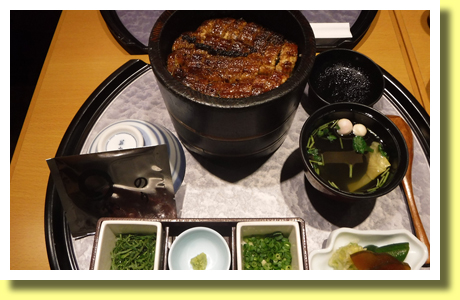
Hitsumabushi ( Grilled Eel on Rice - above ) is one of the most famous and popular Nagoya Meshi dishes.
Eel and Rice are to be divided into some portions.
1) Dish the first portion into the smaller bowl and eat as it is.
2) Season the second portion with wasabi ( Japanese horseradish ), green onions, nori ( seaweed ) and blue perilla and eat.
3) Season the third portion in the same manner and pour in soup/broth or green tea and eat.
4) The remaining portion is to be eaten according to your choice among the above three methods.
|
|
Tebasaki ( wingtips )

Tebasaki ( above ), deep-fried chicken wingtips, are another one of the most popular Nagoya Meshi dishes. After deep-fried, Tebasaki wingtips are basted with sauce, seasoned with salt and pepper. Their spicy flavour and beer make more tastier each other.
|
|
Nagoya Cochin ( chicken )

Nagoya Cochin is a kind of chicken produced in the 19th century by crossing a Chinese Cochin breed and a native Owari breed. Chewing texture and rich taste of Nagoya Cochin would be impressive. Various portions of Nagoya Cochin could be cooked - such as thigh, breast, wingtip, lever ( above ) and egg.
The meat of Nagoya Cochin could be served in various dishes such as Yakitori ( grilled on skewers - above ), deep-fried, hotpot, Oyako-don ( bowl of rice with chicken and eggs ), Tamago-kake Gohan ( rice with raw egg seasoned with soy sauce ) and so on.
|
|
Miso-Katsu

It is said that people in Nagoya love miso ( soybean paste ). So Miso-Katsu ( above ) is one of their favorite dishes. Miso-Katsu is pork cutlet served with miso sauce. Miso, especially red miso ( red bean paste ), broth and seasonings are used to make Miso-Katsu sauce.
|
|
Miso-nikomi Udon

Also Miso-nikomi Udon ( above ) is Nagoya's favorite. It is Udon noodles in hot miso soup, which is made from stock of Kombu ( kelp ), shiitake mushroom, katsuo-bushi ( dried bonito ), soy sauce and red miso ( red bean paste ). Miso-nikomi Udon is served in a earthen pot.
|
|
Kishimen
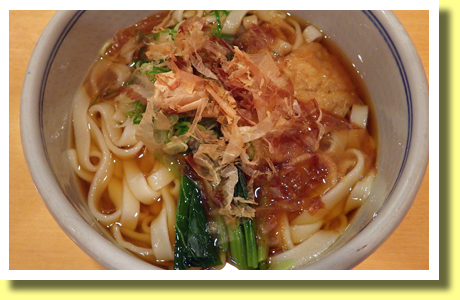
Kishimen ( above ) is famous as one of Nagoya's specialties. It can be said that Kishimen is a flat Udon noodles. Kishimen can be served cold as well. Also Kishimen could be served in hot miso soup.
|
|
Ogura Toast
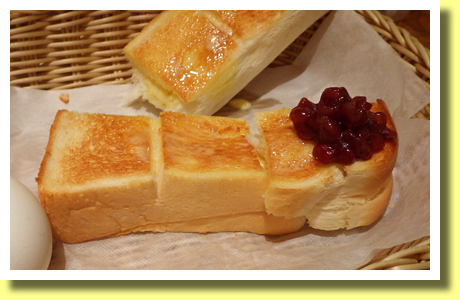
In coffee shops in Nagoya, tourists could see many people eat Ogura Toast ( above ) especially in the morning. Ogura Toast is toasted bread topped with butter and ogura-an ( sweet red bean paste ). Ogura Toast is often accompanied by boiled egg.
|
|
Taiwan Ramen
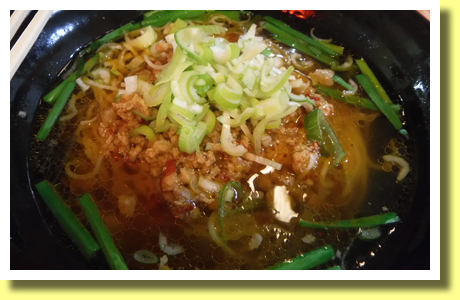
"Taiwan Ramen" ( above ) is ramen noodles in shoyu ( soy sauce ) soup topped with minced and fried spicy pork, spring onions and chives. Some restaurants could offer very spicy Taiwan Ramen. Also some restaurants use lots of garlic.
Taiwan Ramen was created not in Taiwan but in Nagoya by a Taiwanese. So there in Taiwan is no restaurant which offer Taiwan Ramen while many restaurants serve Taiwan Ramen in Nagoya. It is said that "Taiwan Ramen" is called "Nagoya Ramen" in Taiwan. "Taiwan Ramen" is one of Nagoya Meshi dishes.
|
Copyright (c) 2021 Achi-Kochi Zanmai Co., Ltd.
|